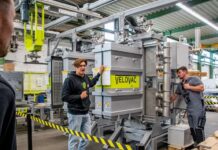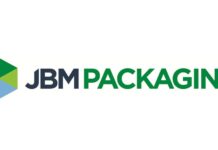As you may have seen previously, we recently published an article characterizing plastics as the great healthcare enabler. The article detailed the innumerable vital roles plastics play in today’s medical world, making clear that many of our most advanced and essential medical practices would be difficult, if not impossible, without these materials. The piece also cited “the demonization of plastics due to their waste-related challenges,” however, acknowledging that many have a negative view of these materials because of their association with environmental harm and, ultimately, climate change.
This is certainly a fair issue to make note of, particularly at a time when concerns about environmental responsibility seem to be reaching an all-time high. The article expanded on the topic by pointing out that there are more efforts now to reduce plastics-related waste and increase reusability, but also suggested – rightly – that the benefits of plastics in so many healthcare applications are too great to ignore regardless.
That may well be the case, but it’s also worth stating specifically that thanks to some improving, high-tech manufacturing methods, there are more and more instances in which medical industries can have it both ways: enjoying the benefits of plastics and taking a more sustainable approach at once. In particular, it’s worth taking a closer look at the practices of injection molding and 3D printing as technologies that enable the widespread use of plastics while potentially minimizing the materials’ harmful effects on the environment.
Where injection molding is concerned, we’re talking about the process of inputting product designs in a system that creates material by way of heating and then molding various plastics. And where it can be particularly helpful in healthcare industries is in its capacity to produce early parts and prototypes without a high degree of trial and error. The misconception with methods like these can be that they’re meant for large-scale production efforts, with machines churning out products faster than any workforce assembly line could. However, Fictiv’s overview of injection molding processes clarifies that there are no minimum order quantities and that low volume production can be facilitated, specifically for the purpose of validating a first attempt. Where medical devices and similar products are concerned, this means related industries can use injection molding to test exact models before ever reaching the mass production process. Then, if a model is acceptable, injection molding can be explored as a means of further production. Throughout this journey, these industries may stand to save a significant amount of material, reducing waste that would be generated by less precise testing and manufacturing methods, and thus offsetting their use of plastics from an environmental standpoint.
As for 3D printing, it’s a process more people than ever are familiar with these days, and one that is already being used a great deal in medical industries. To give a brief overview though, this is a process by which a digital rendering can be input in a machine that quite literally prints the design – from any of a variety of materials – into a physical form that solidifies and maintains its exact intended shape as it’s generated. A lot of the involved materials are plastic, plastic hybrids, or metals, which does raise fair questions about the environmental effects. However, as with injection molding methods, the benefit can be in the lack of waste outweighing the material consumed. Environmental Leader addressed the issue and focused on the very definition of “additive manufacturing,” which is another term used sometimes for 3D printing. It refers to the notion that with 3D printing, you’re building a product from the ground up with only the material needed – as compared to ordinary “subtractive manufacturing,” which involves a surplus of material cut down and shaped into a desired product, and generating waste.
Neither of these technologies is entirely new. But they’ve both been improved in recent years, and are both becoming more viable in major industries, including healthcare. They provide numerous benefits in cutting costs, generating products efficiently, and in some cases assisting with the design of particularly complex necessities. Now though, in considering fair questions about the consumption of plastics by this industry, it’s also time to consider their potential to boost sustainability efforts.



























